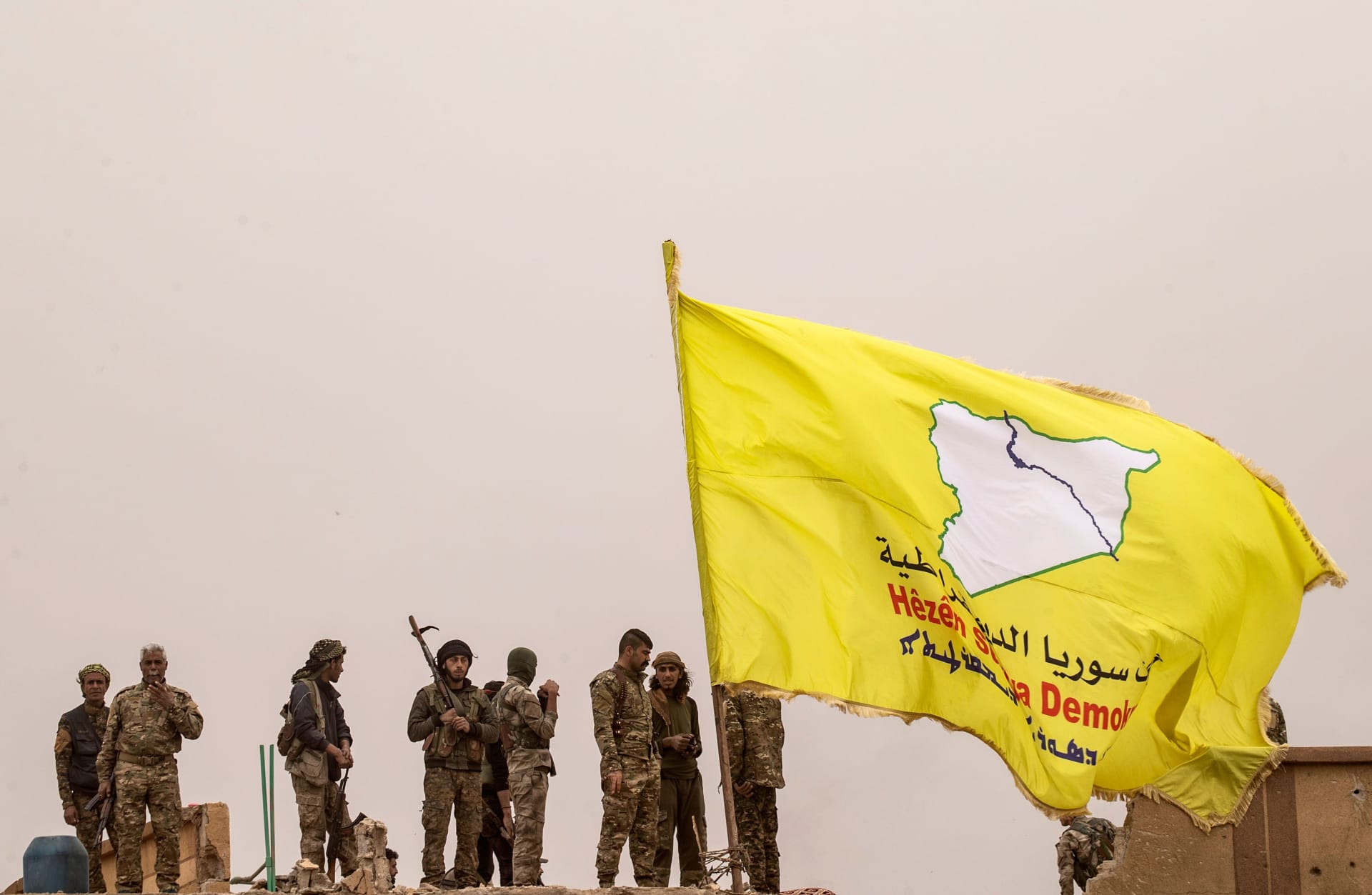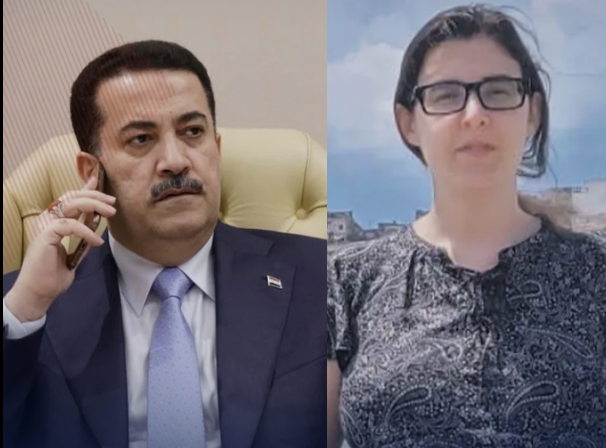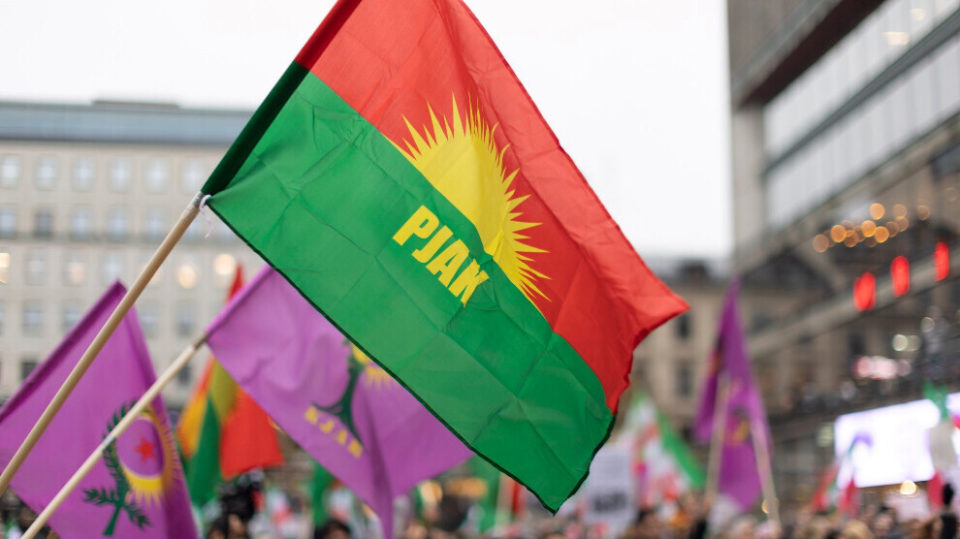
US-Backed Proxy Strengthens Iranian Hand in Intra-Kurdish Struggle
US-Backed Proxy Strengthens Iranian Hand in Intra-Kurdish Struggle
Two Eurocopter AS350 helicopters crashed in northern Iraq’s rural Duhok province on March 15, killing the nine heavily armed passengers on board. The deceased were initially identified as members of the Kurdistan Workers’ Party (PKK) terrorist organization by Kurdistan Regional Government (KRG) counter-terrorism officials (Kurdistan 24, March 16). Shortly thereafter, the Syrian Democratic Forces (SDF), which are affiliated with the PKK but partner with US military forces in Syria, clarified that the deceased were members of its highly-trained Anti-Terror Units (YAT) (Al-Monitor, March 17).
The SDF announcement that the flights were part of a “security and military exchange” did little to answer these questions, and Washington has remained tight-lipped about the expanding activities of its proxy (NPA, March 20). The incident has, therefore, raised a number of questions that remain unanswered, and largely underexamined, more than a month later:
- First, who provided helicopters to the SDF, and who flew them? The SDF is an ideologically Marxist-leaning non-state armed group, operates with an annual US subsidy of more than $160 million, and does not operate helicopters according to published budgets (CTEF 24, April 2022; Medium, May 20, 2020);
- Second, why would a militia paid by the US to fight the Islamic State (IS) in Syria fly clear across Iraq—without notifying KRG authorities—to Sulaymaniyah near the border with Iran? (Kurdistan 24, March 19); and
- Third, given rising tensions between Erbil, which is run by the strongly US-allied Kurdistan Democratic Party (KDP), and Sulaymaniyah, which is run by the PKK-friendly (and Iran-friendly) Patriotic Union of Kurdistan (PUK), how does the increasingly long reach of the SDF impact power balances in northern Iraq (Al-Monitor, March 17)?
“Regional” Security
The French-built AS350 has been used for civil aviation and law enforcement in more than 40 countries and the KRG procured AS350e models in 2016 through “The 7 Group Ltd.,” an Austrian-owned civilian contractor operating in Hungary. The group has operated aviation centers to provide supply, logistics, maintenance, and training centers in Erbil and Sulaymaniyah since 2009, and procured three AS350e helicopters at a price of $1.6 million from Canada for the use of the Sulaymaniyah-based Counter-Terrorism Group (CTG) anti-terrorist unit (7Group, May 7). As CTG has more recently been using MD530 helicopters, the AS350s have been available for other uses.
One such use appears to be ferrying SDF fighters out of Syria. This is no straightforward proposition for two reasons. First, the justification made by the US Department of Defense to Congress for funding to defeat IS in Iraq and Syria (Counter-ISIS Train and Equip Fund, or “CTEF”) clearly delineates support to Iraqi forces for the mission in Iraq and to Syrian forces, primarily the SDF, in Syria. No budgetary justification is argued, nor policy approval given, for forces operating in both countries or trans-regionally (CTEF FY24, March 2023).
Second, despite assertions at the United States Central Command (CENTCOM) headquarters in Tampa and in Washington that SDF are “local partners” in Syria, the PKK-linked elements that comprise most of the SDF consider themselves part of a regional enterprise. They distinguish neither their political arms nor their armed wings in the various countries where they operate (Atlantic Council, January 2016). All are components of a broader network called the Koma Civakên Kurdistan (KCK, or Kurdistan Confederal Community).
The KCK is a separatist transnational organization extruded from the PKK (Umran Center, May 7). It defines its structure as based on four functional elements: leadership, legislative, executive, and judiciary. The KCK links the PKK-controlled Turkey Assembly, the Kurdistan Free Life Party (PJAK) in Iran, the Kurdistan Democratic Solution Party (PÇDK) in Iraq, and the Democratic Union Party (PYD) in Syria. The KCK program rests on four foundational elements: Abdullah Öcalan as the founder and leader of the KCK, Kongra-Gel (Kongra-Gelê Kurdistan-Kurdistan People’s Assembly) as its legislative body, an Executive Council as executive organ, and a judicial body consisting of the High Court of Justice, Administrative Courts, and People’s Courts. Article 36 of the KCK Contract identifies the PKK as the ideological power of the KCK system, and stipulates that each member of a constituent organization within the KCK should accept the PKK as an ideological guide. Kongra-Gel (sometimes referred to as the Kurdistan National Council) operates politically in Europe, and the KCK Executive Council organizes political and military activities in Turkey, Iran, Iraq and Syria. The KCK Executive Council oversees political-military wings operating in Turkey and northern Iraq (PKK-HPG), Iran (PJAK-YRK), Syria (PYD-YPG), and the PÇDK party in Iraq. The KCK is thus a regional ideological movement and political-military organization. The PYD/YPG is an organic part of the whole; it never renounced the KCK, and its participation in the SDF under US lead has not ended its role in the KCK project.
The US claim of strictly local and limited relations with the YPG via the SDF is unconvincing to Ankara or non-PKK circles in Syria and Iraq. Attempts by the US to facilitate regional operations by SDF components, or to press “Kurdish unity” without reference to the broader KCK project, are naïve at best, and are considered a threat to US treaty allies, the Turks, and non-PKK Kurdish movements, such as the KDP. This accounts for much of Erbil’s critical response to the helicopter incident (Rudaw, March 18). In Sulaymaniyah, the opposition Goran party has also objected to increasingly blatant PUK-PKK coordination because the party sees that cooperation as a possible trigger to intra-Kurdish fighting and more direct Turkish military interventions in PUK-controlled areas (Basnews, April 8).
Why Sulaymaniyah?
What makes Sulaymaniyah interesting for the SDF? The city is controlled by the PUK, which is a rival to the KDP and is cooperative with the PKK. The PKK heartland lies north of Sulaymaniyah, in the Qandil mountain complex (see Terrorism Monitor, September 21, 2006). The PKK kidnapped two Turkish intelligence officers in the Dukan district of Sulaymaniyah in August 2017, and executed them together with other Turkish hostages in February 2021 during an attempted Turkish rescue operation.
Turkey believes that the hostages were taken by the PKK with the help of PUK officials. Turkey subsequently deported the PUK representative in Ankara. Turkish intelligence increased activities near Sulaymaniyah, and stepped up the frequency and range of drone strikes on PKK targets nearby. Turkeyalos suspended all flights to and from Sulaymaniyah province on April 3 and linked decision to the intensification of PKK/PYD activities (mfa.gov.tr, April 5). A Turkish drone strike near the Sulaymaniyah airport last month closely missed a convoy carrying both the SDF commander and US personnel, similar to an incident in Syria last November. This was intended perhaps to forcefully signal to Washington that strengthening the PKK-PUK axis comes with risks (The National, April 15; CNN, November 2022).
Ankara interprets PYD/YPG collaboration with the PUK as an attempt to expand influence beyond Syria and gain legitimacy and leverage for the PKK/KCK network vis-à-vis other Kurdish groups in Iraq. Turkish Intelligence Chief Hakan Fidan hosted KRG Deputy Prime Minister Qubad Talabani in Ankara on April 11 (Rudaw, April 11). He conveyed that relations between Ankara and Sulaymaniyah would not normalize until collaboration between the PUK and PKK ceases. At Ankara’s request, security forces Erbil shut down the headquarters of the Kurdistan National Congress (Kongra-Gel) on April 9.
The View from Erbil
Officials in Ankara and Erbil have known of the helicopter route between northeast Syria and Sulaymaniyah for the past two years, but did not know who was using it until the recent crash (Middle East Eye, March 21). KRG Prime Minister Masrour Barzani called the flights unauthorized and blamed them on a group within the PUK (Sabah, March 19). To Erbil, this is just the latest in a series of provocations against the KDP conducted by the PKK, the PUK, or both.
Security officials in Erbil suspect the PKK of running an extensive intelligence network within KDP-ruled areas, and the PKK has attacked KDP forces on several occasions in recent years (MENA Affairs, August 2021). The PKK has sabotaged the oil pipeline from Iraqi Kurdistan to Turkey, which is the economic lifeline of the KRG (TRT, November 11, 2020). The KDP-led Parastin security agency has accused the PUK’s CTG, a US-partnered organization, of assassinating a former CTG member in Erbil last October (Rudaw, October 12, 2022). This comes as the PUK has boycotted joint governmental meetings with KDP officials, marking a return to “dual administration” rather than a unified KRG, with more fragmentation likely (Amwaj, January 26).
The PKK and PUK, which were friendly for decades, have become increasingly intertwined in recent years. Senior PKK figures public endorsed PUK candidates running for the Kurdish parliament (Rudaw, September 2021). The PUK, weakened by political infighting, has become more dependent upon—and cozy with—Iran. The PKK, similarly, is considered by KDP officials to be heavily controlled by Iran (Al-Monitor, August 4, 2022).
The Iran Angle
The PUK-KDP struggle is inextricably linked to the broader Iranian effort to subordinate political forces in Iraq—Shia, Kurdish, or Sunni—to its own will. Iran has engaged in a campaign of intimidation against the KDP in recent years that includes missile and rocket attacks against political figures, administrative offices, and energy facilities. This has coincided with a successful attempt to intimidate Iraqi nationalist Shia leader Muqtada al-Sadr, with whom the KDP was allied (GIS Reports, July 2022).
The PUK has tied its destiny to that of the pro-Iran bloc in the Iraqi parliament, the al-Fatah faction, which has been linked to attacks on US and KDP targets in northern Iraq. Power struggles among Talabani scions—Lahur, Qubad, and Bafel—notwithstanding, the PUK has evinced unambiguous readiness to work with the PKK, and Iran-backed, sanctioned Shia Iraqi groups, to redress its weakness vis-à-vis Erbil (Ha’aretz, July 27, 2021). Lahur, the founder of the PUK CTG and architect of US cooperation with the PKK’s Syrian franchise, was ousted from leadership positions last year at the behest of his cousins (Al-Monitor, November 3, 2022). Bafel, who has emerged as the primary PUK leader, has prioritized ties with Tehran and Baghdad over Erbil to a degree that drove speculation that he intends to split Sulaymaniyah off from the unified KRG altogether (MEI, March 13).
Closer ties between the YAT and the PUK’s CTG thus come at the same time the PUK leadership is steering sharply away from a unified KRG and towards the Iranian orbit. Iran, for its part, has pursued a years-long strategy of using the PUK, the PKK, and its clients in Baghdad to weaken the KRG, decrease its autonomy, and, ultimately, cleave Iraqi Kurdistan away from the West (TWI, February 2017; Brookings, December 2020).
Conclusion
The deepening KDP-PUK rift has created a conundrum for the US in the region. By issuing anodyne calls for Kurdish unity, the US has done so without addressing the underlying Iranian strategy (ESTA, January 17). By pressing convergence between the PKK-affiliated YPG in Syria and the PUK in Sulaymaniyah while neither addressing Iranian influence over both nor ending PKK attacks against Turkey and the KDP, US military and diplomatic officials are reinforcing an axis that rests upon Iranian power. The rationalization that a stronger PUK with better ties to the YPG serves US efforts against the Islamic State may be true in the narrow sense, but at what cost (SDF, April 9)?
The immediate cost includes triggering Turkish escalation against the PKK and YPG in PUK-controlled areas of northern Iraq. The medium-term cost includes exacerbating KDP-PUK tensions, and destabilizing the most solid US ally in northern Iraq—the KDP—by strengthening forces aiming to supplant it. The longer-term cost includes granting Tehran and its friends in Baghdad political primacy in the Kurdistan Region of Iraq, as long as they tolerate US military presence focused solely on pursuing Islamic State remnants.


